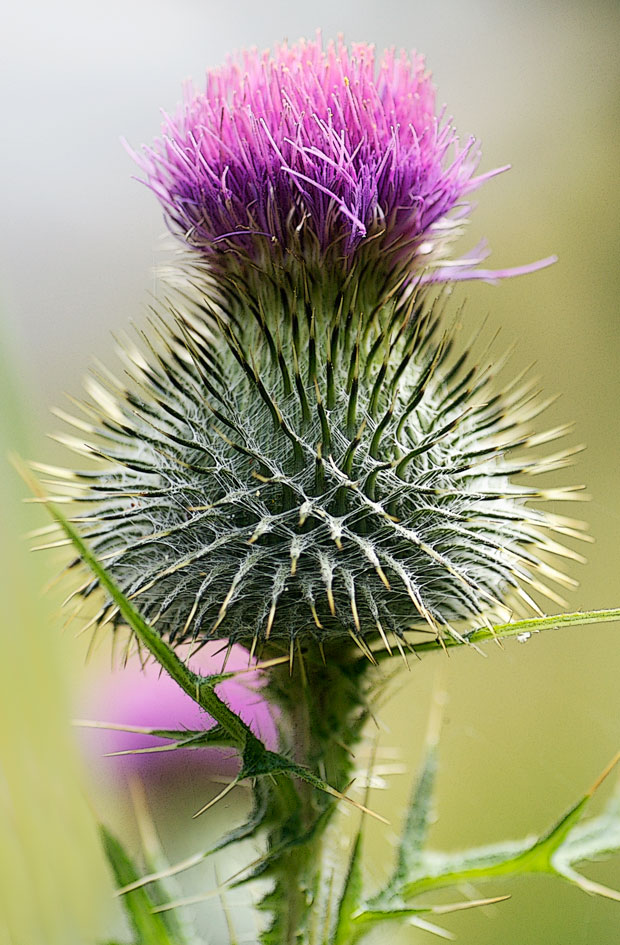
Month: June 2007
Suspicious Activity
Mike has been trying to convince me for weeks to go out to the tide flats on Marine Drive during a low tide to observe the birds. So this morning I took my camera and drove out around 9:00. There were a remarkable number of birds, including several blue herons, and a few birds too far away to identify.
The real highlight of the morning, though, was being stopped and questioned by a motorcycle policeman who was checking me out because I had been reported by a lady as taking part in suspicious activity. What she meant, of course, was that she thought I might be a terrorist.
After all, it was the middle of a work day, and I was wearing a camouflage jacket, a NIsqually Wildlife Refuge baseball cap and carrying a camera with a telephoto lens. What could be more subversive than that? Any red-blooded American should have been out earning money, not wasting valuable time trying to get pictures of Canada Geese,
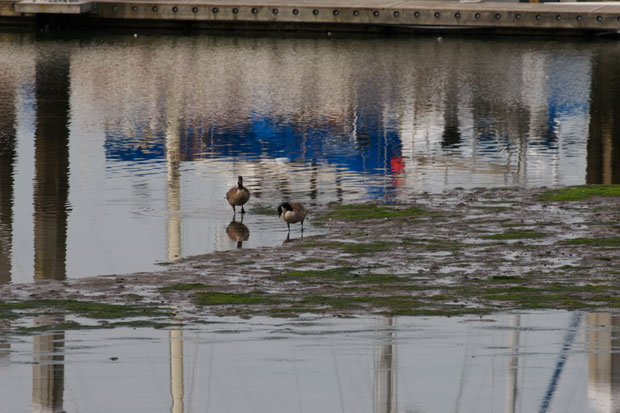
Great Blue Herons,
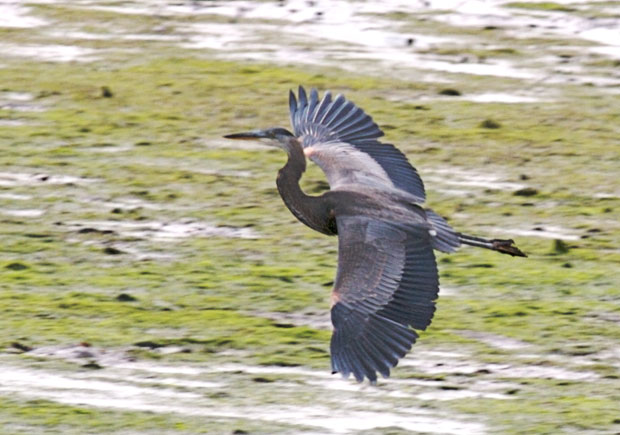
or, worse yet, wild flowers.
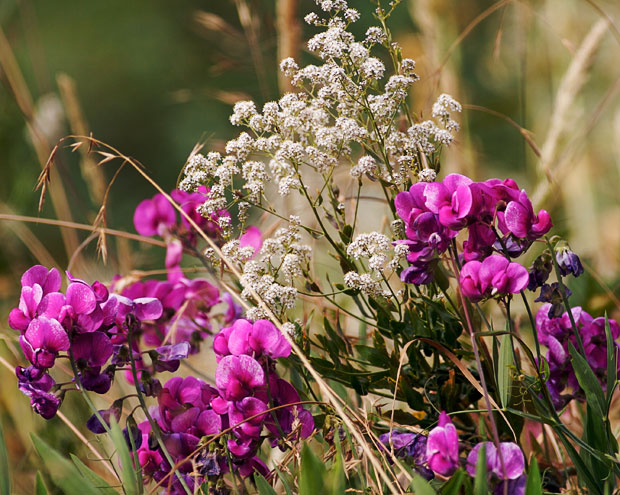
In my defense, I could have protested that I was a loyal American. After all, I was carrying a $3000 camera and lens, and surely there’s nothing more American in Our Brave New World than buying expensive toys in order to enjoy nature. Instead of actively doing something to help preserve the birds and the environment, I was merely standing by recording their demise, something Americans have done remarkably well the last 100 years.
If I were capable of being a terrorist I would long ago have chained myself to a tree or been convicted of burning down a house that had built in the middle of the wilderness by some millionaire seeking to be “one with nature.”
No, I am no terrorist.
I can only aspire to be subversive, trying in my own quiet way to convince others many things are more important than those things money can buy.
Perhaps, the policeman wouldn’t have been quite so friendly if he’d known about this site, my opposition to the war, and my disdain for those who are actively destroying the environment we all rely on to exist.
On the Sunny Side of the Road
It was in the 80’s here today. Far too nice to spend the day inside. But since I knew it was going to be hot, I left for Nisqually at 8:00 and finished my hike by noon.
I’m discovering more and more that bright sunny days really aren’t the best days to take pictures because of the sharp contrasts between sunny spots and deep shadows, but you do have a better chance of capturing a bird in flight, even with a 5.6 lens.
One of my favorites of the day is of this Great Blue Heron, just taking off, with his wings nearly touching the ground:
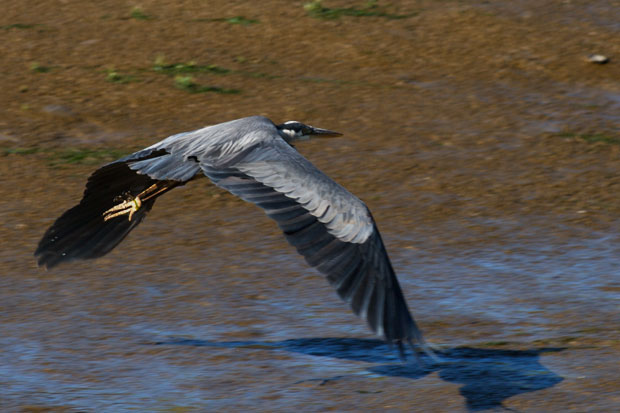
When I startled this raccoon that was walking directly toward me as I walked around a corner, he did just the opposite, freezing in place until I turned away, and freezing again when I turned back:
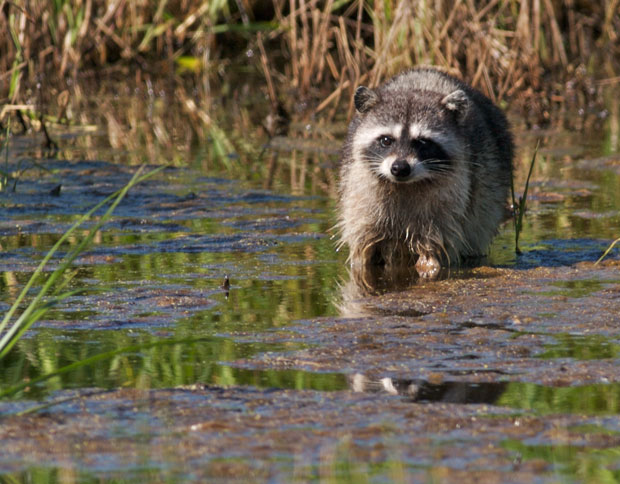
Now if I could just convince the Belted Kingfisher to adopt this technique. But then I wouldn’t get a dramatic shot like this:
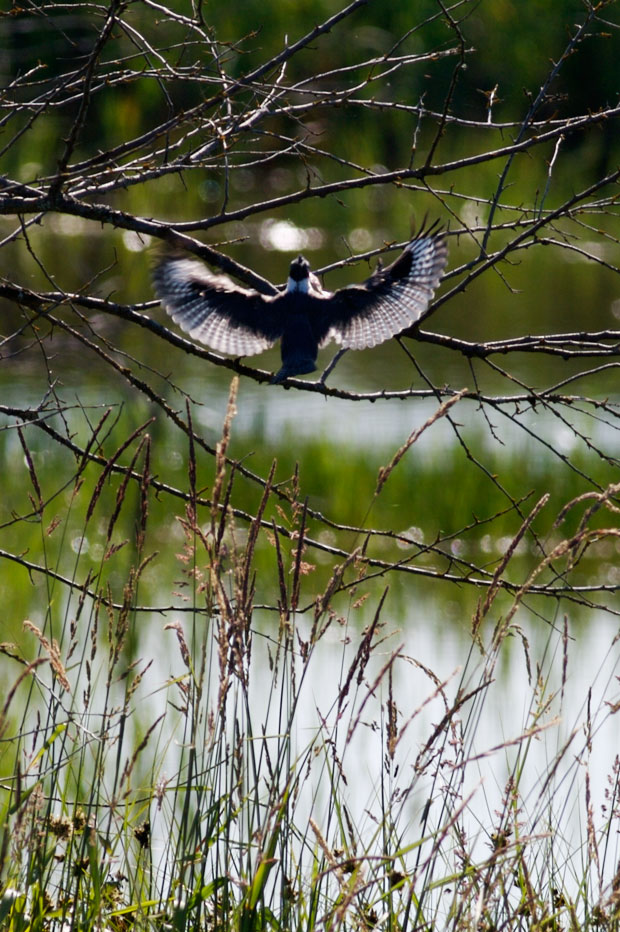
Deja Vu All Over Again
No flowers or birds today, just a depressing article. In it, an American general decided that prisoners could be tried without defense counsel because they “had no legal rights.” 1.700 enemy combatants were held as prisoners under primitive conditions “although they were accused of no other crime than having been born” enemies of America.
As part of a mass execution of 38 prisoners, two enemy prisoners were wrongly hanged despite orders from the President ordering them to be spared. The official responsible declared, “It was a matter of regret that any mistakes were made,” but “I’m sure they were not made intentionally.”
Later, two combatants who had fled to a foreign country were kidnapped by American agents, drugged and secreted back to America to stand trial and, ultimately, be executed.
Sound familiar? Grabbed right from today’s headlines?
That was certainly my first thought when I read the chapter entitled “Little Crow’s War” in Bury My Heart at Wounded Knee, the story of the uprising of the Santees, woodland Sioux, in Minnesota after the United States government failed to pay annuities to them and agents would not give them food promised under treaty rights. The insurrection was triggered when four young Indian braves raided a nearby farm and ended up killing the farmer and his family. The rest, unfortunately, is all too familiar.
Those Indians left alive after the uprising were banished to Crow Creek, a reservation on the Missouri River where more than 300 of the 1,300 Santees sent died the first winter.
Perhaps the most chilling paragraph in the entire piece, at least if you consider our current situation is this one:
Among the visitors to Crow Creek that year was a young Teton Sioux. He looked with pity upon his Santee cousins and listened to their stories of the Americans who had taken their land and driven them away. Truly, he thought, the nation of white men is like a spring freshet that overruns its banks and destroys all who are in its path. Soon they would take the buffalo country unless the hearts of the Indians were strong enough to hold it. He resolved that he would fight to hold it. His name was Tatanka Yotanka, the Sitting Bull.
If the best predictor of the future is the past, and I have no reason to believe otherwise, our current operations in the Middle East don’t bode well for our future. Somewhere there’s a future enemy leader watching our actions and waiting for his time.
